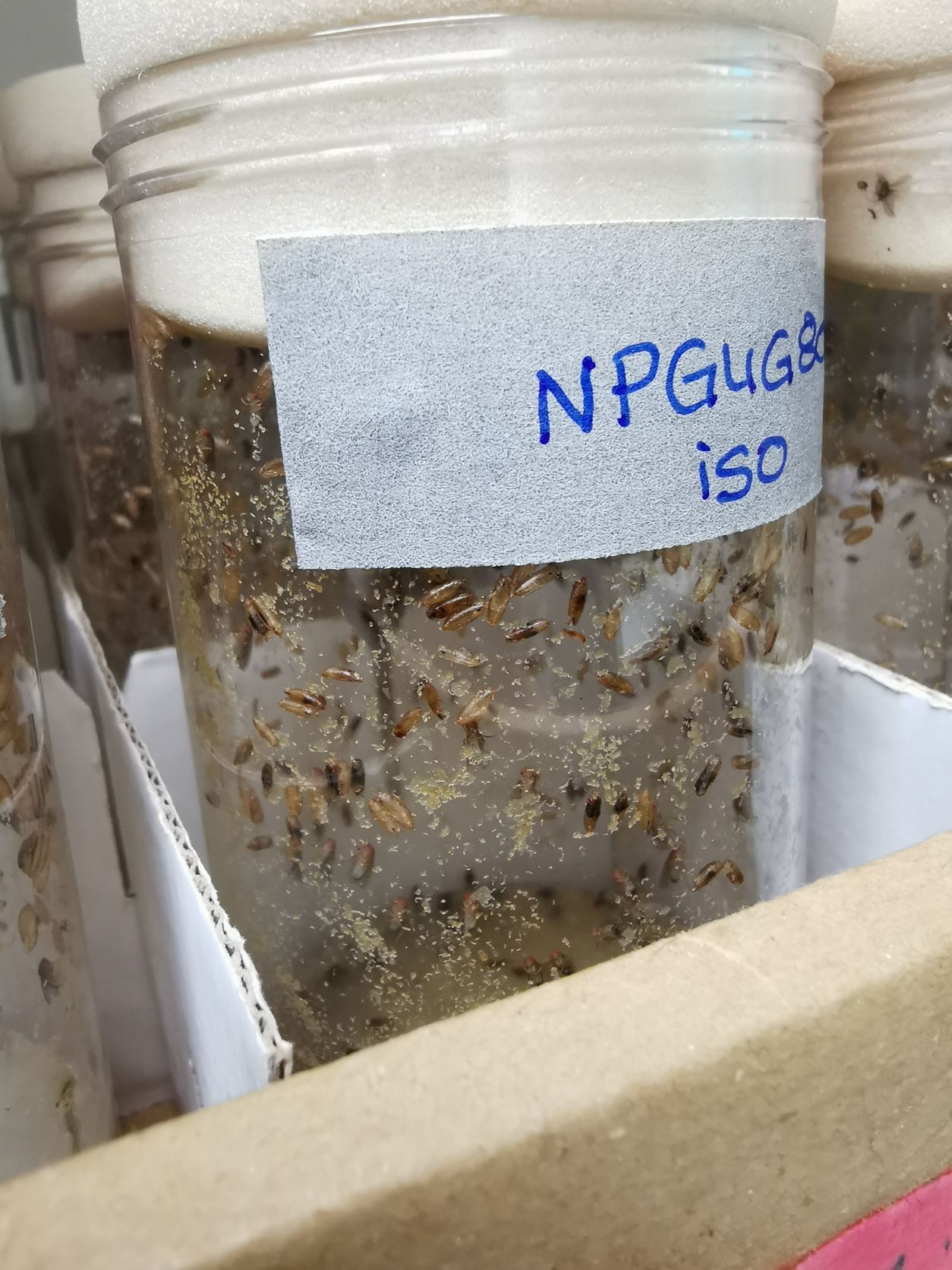The Drosophila fly shares some immunity genes with humans!
Credit: @Top Music – SR
This is the topic that caught my attention. But as far as molecular biology is concerned, I must confess a certain incompetence. Fortunately for us, Jean-Luc Imler is, in addition to being a renowned scientist, a good teacher. He is director of the Institute of Molecular and Cell Biology (IBMC) of the CNRS. We will do as with DNA: we will sequence.
Basic research, what is it?
“Basic research is studying something without knowing what you will find. Just to understand how it works. That’s what we did here, early on, with how insects defend themselves against infection, which nobody really took the time to study. We look more into mammals because they look like us. Applied research is about enabling human beings to benefit from the results of these studies. The development of a vaccine is applied research.”
Why insects originally?
“Let’s go back to our basic research. It is not known if there will be nominations one day, at the beginning. Until the 1990s, most work in immunology focused on mammals: their immunity involves antibodies, white blood cells that are absent in insects. So how do they defend themselves? Vertebrates have adaptive immunity: when the man was first infected with Sars-Cov2, a virus he had never seen before, he was able to create antibodies: his immune system has suitable🇧🇷 More this adaptive immunity is not present in invertebrates. There is only innate immunity, which is also present in us, since it is this that directs the system towards the production of the right antibodies.“
Interesting and exciting elements.
“We have noticed at IBMC, and in particular at the work of Jules Hoffmann, Nobel Prize for Medicine and Physiology in 2011, that insects, to defend themselves from infections, produce antimicrobial molecules and cells, which phagocytose: they will ingest and digest the microbes. We worked with the fruit fly and using genetics we identified the genes that reacted when attacked. And we realized that these genes also existed in humans ! This work allows us to go back in time and identify genes that existed in the common ancestor of mammals and insects that lived hundreds of millions of years ago. Also, whether this gene has persisted through evolution and is still there Todayis that it is important.”
A new defense mechanism against viruses.
“In our studies, we discovered an immune response against viruses, which involves a gene also present in humans. This gene encodes an enzyme that produces a cyclic dinucleotide (laughs). Basically, the immune system makes a small chemical molecule that attaches itself to receptors and activates a stronger and faster response. It’s an amplifier. And we see it if we inject this molecule into our fly, it resists many viruses. It’s very interesting. This occurs through the expression of more than a hundred antiviral molecules, whose function we are now studying”.
 It is here, on the Strasbourg campus, that Jean-Luc Imler’s research advances
It is here, on the Strasbourg campus, that Jean-Luc Imler’s research advances
Time travel.
“ Many immunity genes already existed hundreds of millions of years ago and still protect flies and humans from infection ! Some of these genes come from the microbial world: bacteria are in fact, like us, infected by viruses since the appearance of life on Earth, and they defend themselves against these infections with mechanisms that we have inherited. Alongside this, antibodies have been added in humans: one can therefore ask what has been added in these hundreds of millions of years in insects? Indeed, our latest work shows that the chemical amplifier we have identified induces genes in flies that do not exist in mammals: we will study these genes that no one has ever studied!“
Apps?
“They are impossible to predict at this stage but the bet is that the study of unknown genes activated to defend the fly against viruses will allow designing new strategies to fight viruses: it is bio-inspiration. A new search field opens. For instance, we will study insects that feed on bat guano, because we know it is a transmission vector of Sars-Cov2, Ebola. Then we will see how these insects fight these viruses. The problem here is that there are an estimated 5 million insect species, compared to only 5,000 mammal species. It’s a fantastic reservoir of biodiversity, even if we won’t be able to study them all (laughs).
Mosquitoes transmit viruses, but they also fight them.
“Another field of application is the transmission of infectious diseases by mosquitoes, such as dengue or Zika viruses. Our work has already identified a mosquito that fights dengue very effectively and does not transmit it to humans..”

Jean-Luc Imler drops her blouse for a photo


